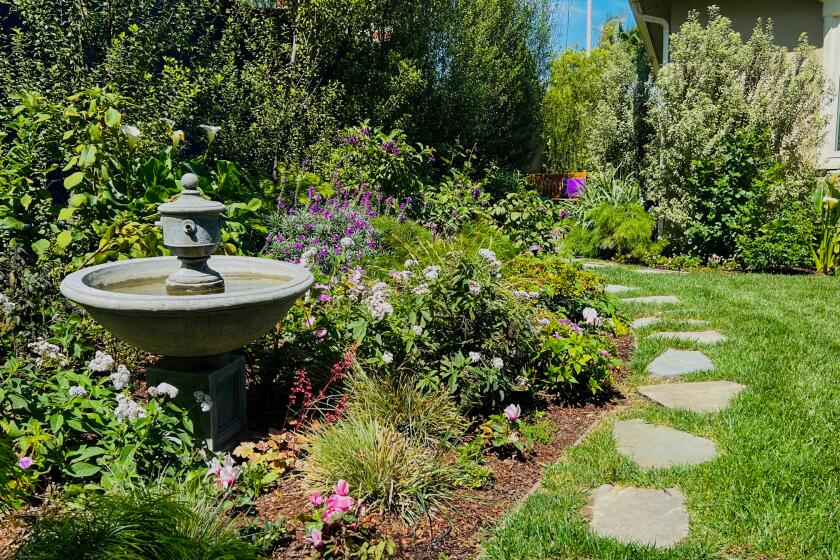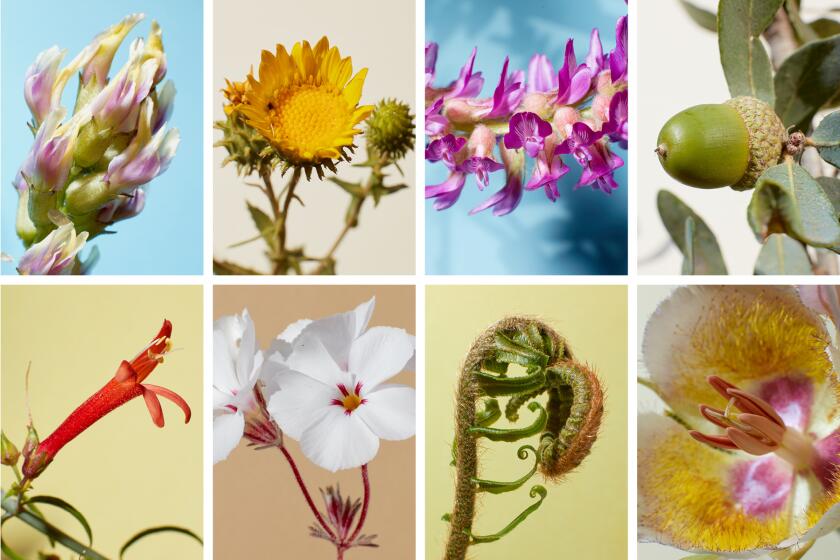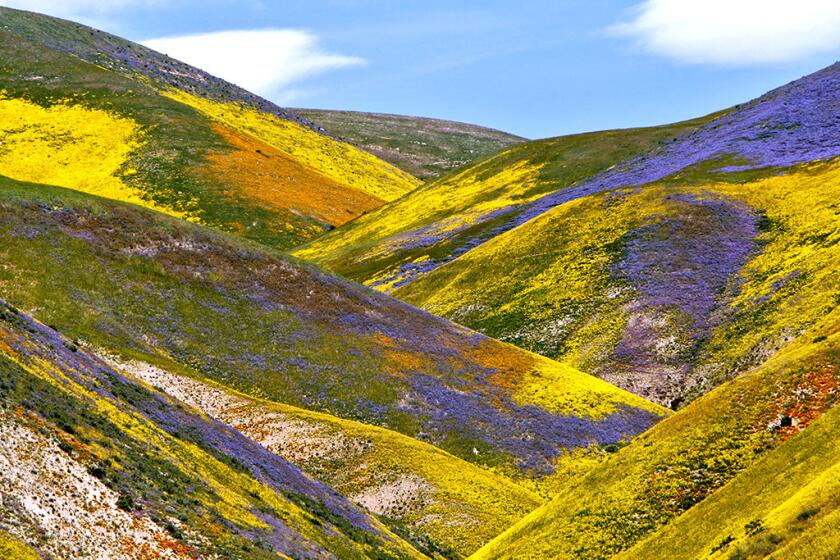
- Share via
Attention, anyone who thinks native blooms are brilliant in the wild — or our yards — but don’t work in bouquets.
Boy, are we wrong.
This isn’t an invitation to trample wildflower fields to pick bouquets — our precious wildflowers need to stay unpicked so their seeds will produce blooms in the future — but it is notice that native plant gardeners don’t have to rely on grocery-store bouquets to grace our tables.
With the right preparation and care, you can grow and assemble stunning, long-lasting bouquets for your home while building habitat in your yard or patio, said Linda Prendergast, crew chief and lead designer for the California Botanic Garden’s floral volunteer group known as Native Designs.
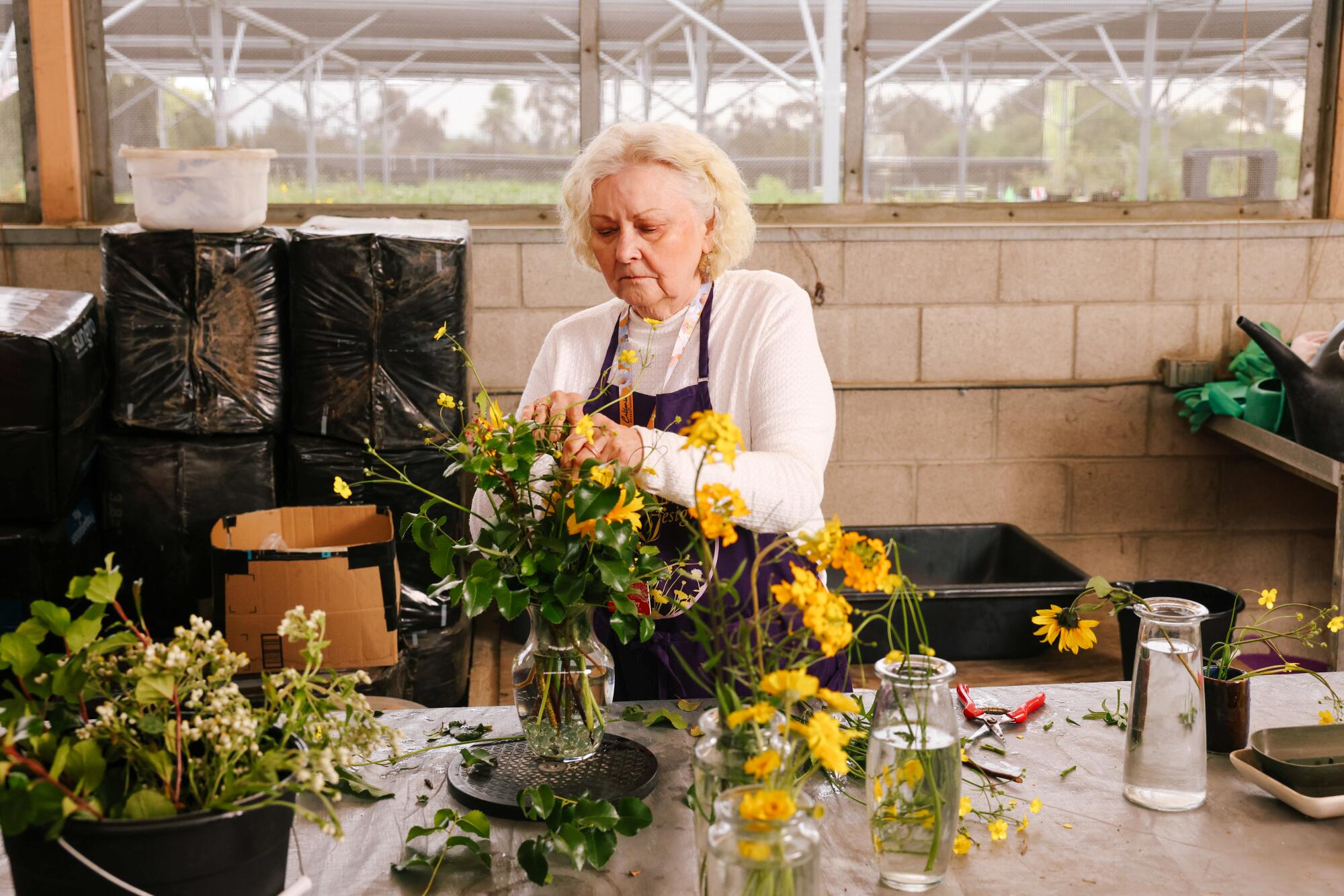
Prendergast had a career working in flower shops and then wholesale nurseries when she was younger, and she still appreciates traditional ornamental bouquets, but over the years her environmental awareness has cooled her delight in traditional ornamentals.
Sign up for our L.A. Times Plants newsletter
At the start of each month, get a roundup of upcoming plant-related activities and events in Southern California, along with links to tips and articles you may have missed.
You may occasionally receive promotional content from the Los Angeles Times.
Grocery store bouquets “are lovely and I buy them. But they have also been grown with lots of fertilizer and imported from South America. They’re flown in using lots of jet fuel that’s bad for our air,” she wrote in a text message.
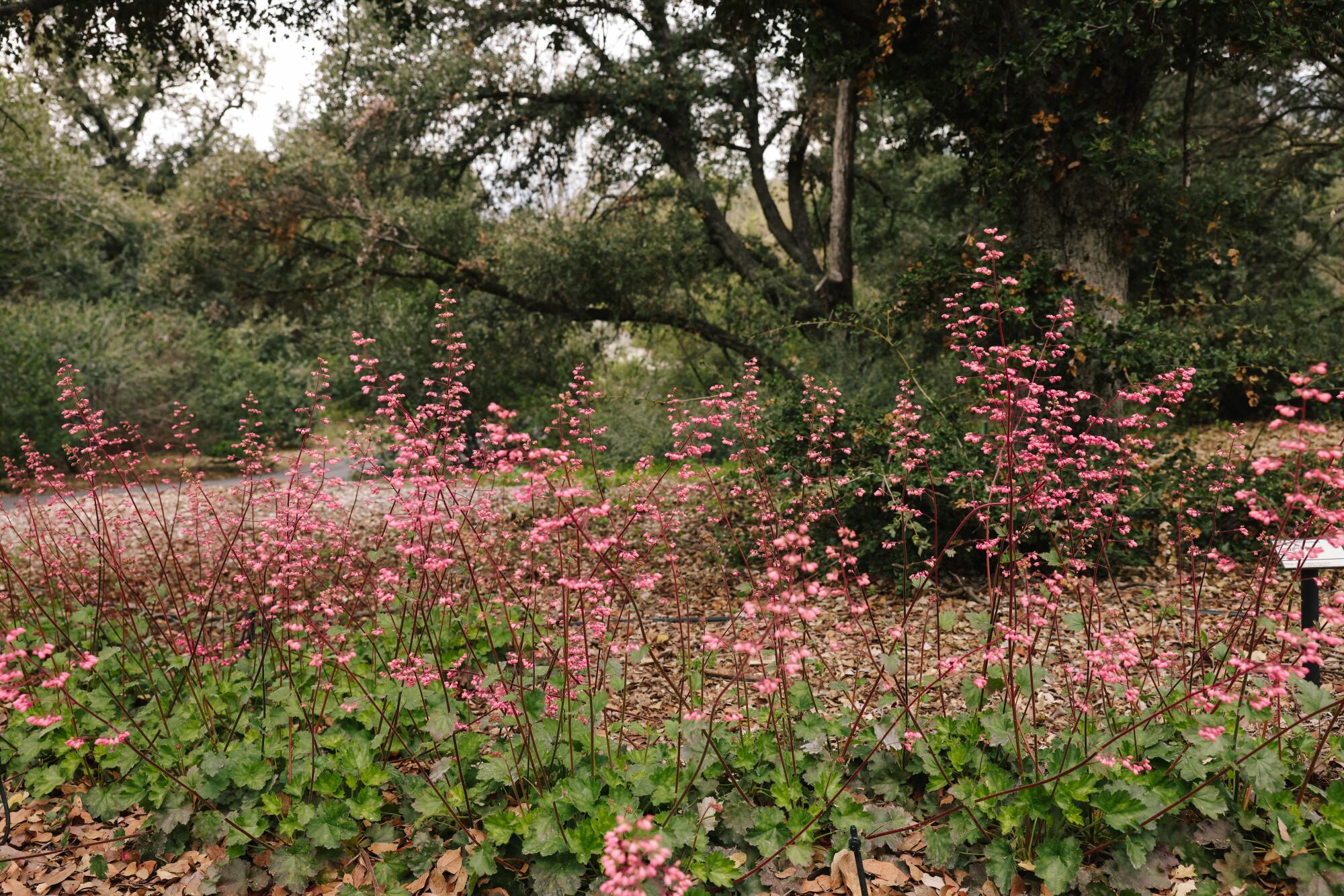
“By contrast, native flowers are lovely in your garden or flower beds; they generally use less water than other varieties and most importantly, they are food sources for pollinators. Our precious bees and butterflies rely on natives as a food source.”
So these days, Prendergast and her group of about 32 merry volunteers put their floral design skills to work arranging flowers cut from and for events at California Botanic Garden, the state’s largest botanic garden devoted to native plants.
The recent rains have made 2024 a fabulous year for flowers — just in time for spring garden tours around Southern California. Here’s a list of intriguing tours.
After an afternoon watching Prendergast, Susan Spradley and Carol Petty create cheerfully gorgeous arrangements, I can personally vouch for the variety and beauty of their bouquets, as well as their longevity. Petty’s graceful arrangement of coral bells (Heuchera sanguinea ‘Coral Bells’), white sage (Salvia apiana), fragrant pitcher sage (Lepechinia fragrans), hollyleaf cherry (Prunus ilicifolia) and sugar bush (Rhus ovata) still looked fresh and lovely on my dining room table a week after it was made.
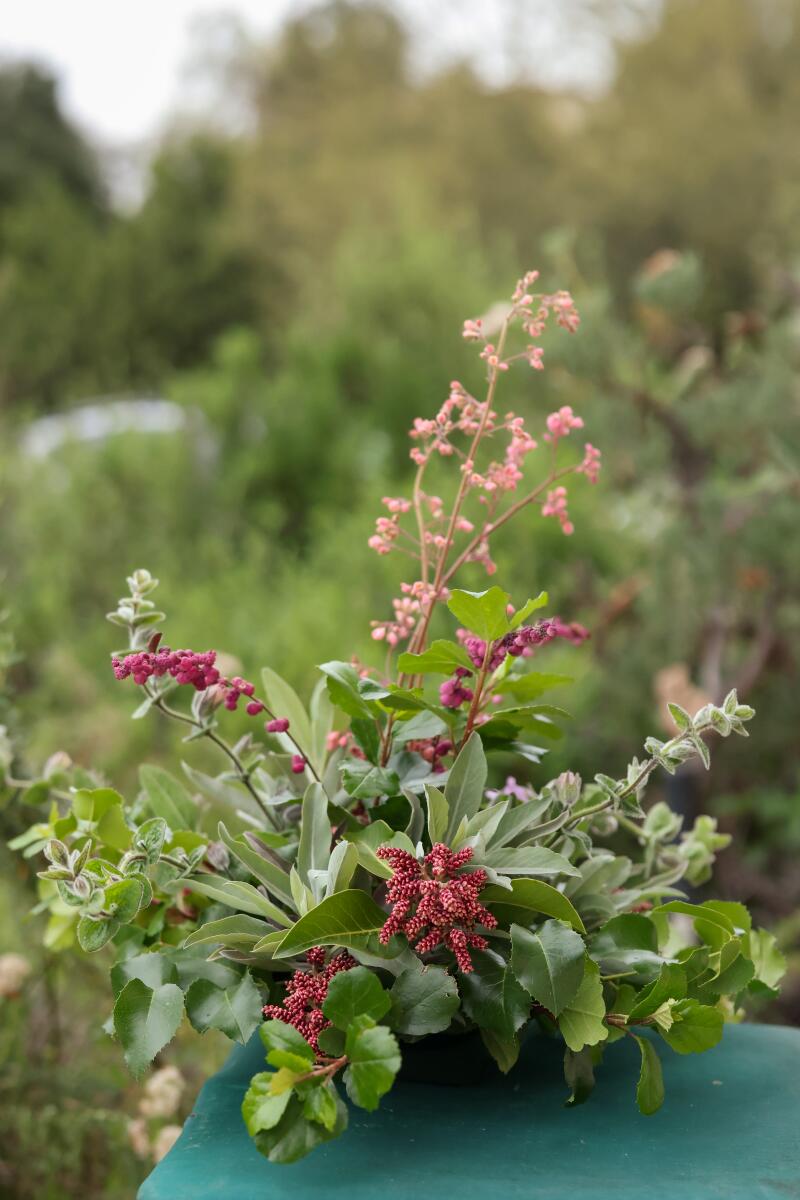
A bouquet by Carol Petty of white sage, coral bells, Catalina currant, sugar bush, hollyleaf cherry and fragrant pitcher sage. (Dania Maxwell/Los Angeles Times)
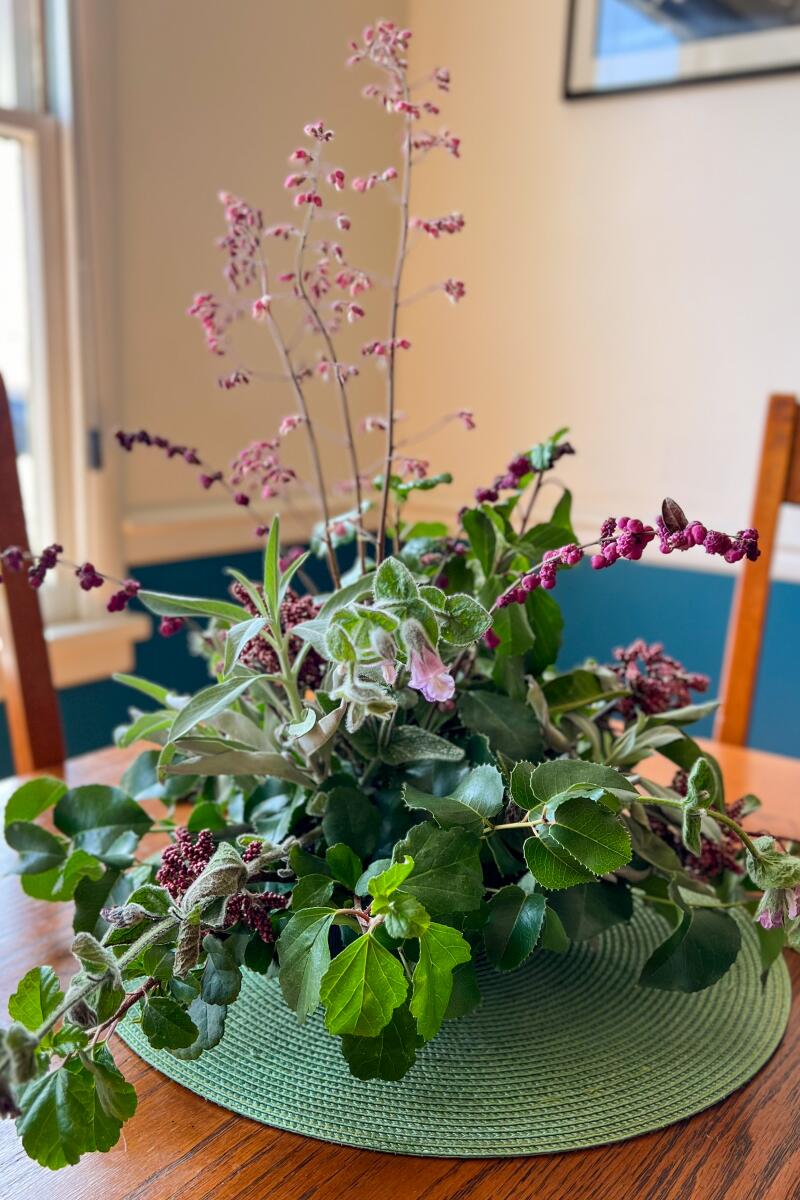
Petty’s native plant arrangement, still looking fresh a week later. (Jeannette Marantos/Los Angeles Times)
There are a few important tricks for creating native bouquets, Prendergast said.
- Cut your flowers and foliage early in the day, and immediately plunge the cuttings into warm — not hot — water.
- Look for interesting branches and berries as well as flowers to add color and fullness to your display.
- Don’t snip helter skelter. Make sure you cut your branches near the base of the plant to maintain its shape and integrity.
- Leave the cut flowers and foliage in warm water mixed with a floral food (Prendergast uses a product called FloraLife Crystal Clear available in packets or bulk) for at least 12 to 24 hours.
- If you use white sage foliage, hydrate it in a separate bucket since the plant gives off an oil that is unpleasant for the other flowers.
- Most native plants are heavy drinkers once they’re cut, so they’ll do better in a vase instead of floral foam. And some, like California poppies, don’t have stems hard enough to push into foam and get the hydration they need, she said.
- If you must use a shallow container to arrange your flowers, try using a crumpled ball of chicken wire to hold the stems instead of foam blocks. Those foam blocks grow fungus so they shouldn’t get reused and they can’t be recycled, Prendergast said, so they just add to landfill waste. Chicken wire, however, can be washed and reused. Just be sure your foliage covers the base so it doesn’t show.
- Prendergast also recommends using waterproof floral tape in green or clear to create a grid over the top of your container to further support your flowers and foliage and ensure your design stays in place.
- Snip the ends of your stems as you add them to your container to improve water absorption.
- Some branches are heavy, so make sure you have enough weight in your container, like pebbles or glass rocks, to keep it from tipping over.
- Start with the largest or showiest flowers first and add from there. Keep turning the container to make sure you’re filling in gaps.
- Change the water in your display daily to keep the flowers fresh.
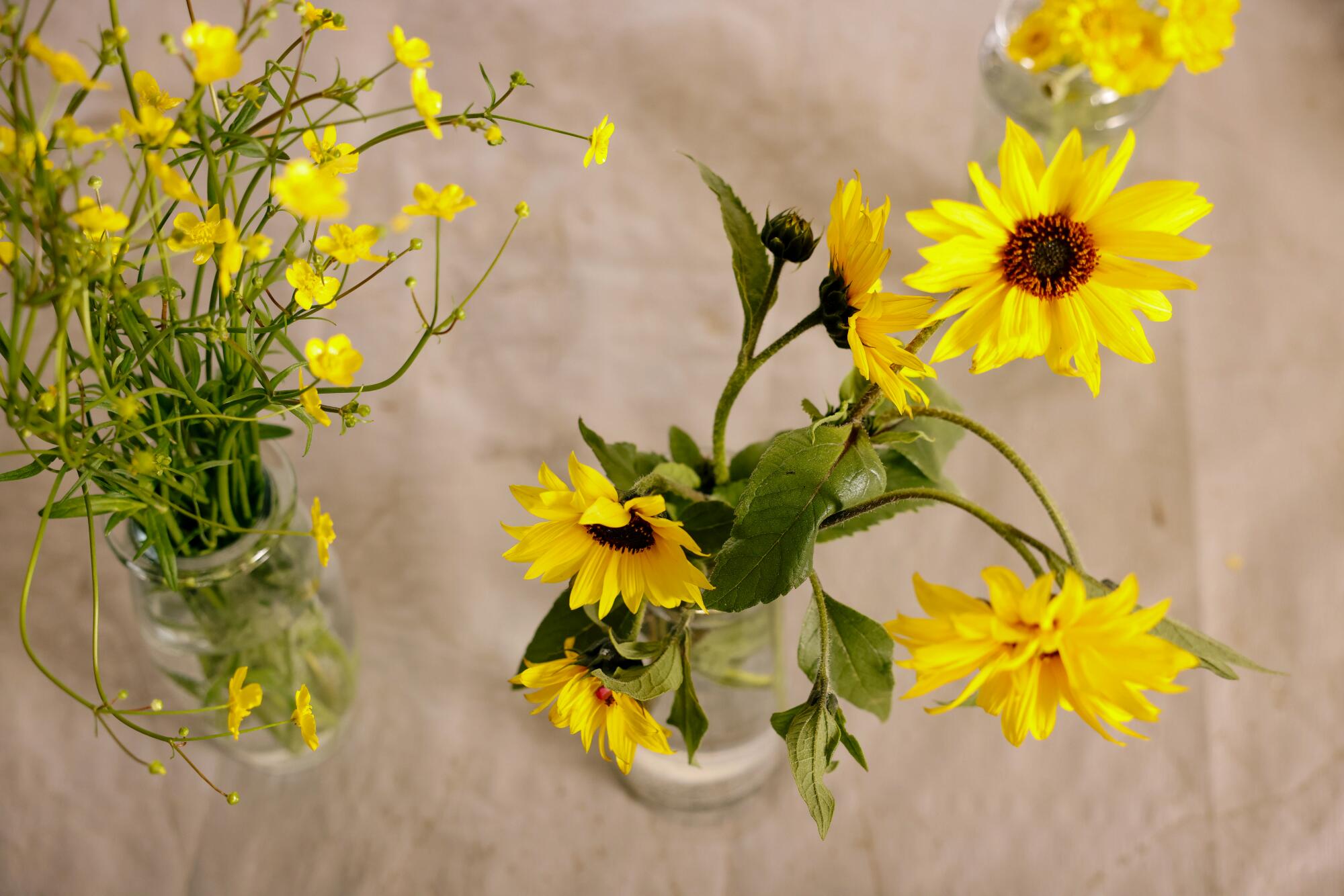
Not all native flowers and foliage are great in bouquets, Prendergast said. The silvery green foliage of white sage makes for great accents in bouquets during cooler winter months, but come spring, when the plant is starting to bloom, the leaves tend to soften up and go limp, she said, making them sad choices for arrangements.
At 34, Matt Smith is a widower and amateur botanist whose grief and passion are fueling a quest some might call quixotic — to photograph every plant native to Los Angeles County.
Ceanothus blooms also don’t last much longer than a day once they’re cut, and manzanitas, large shrubs with reddish limbs and dainty bell-shaped flowers, “are just too precious” to potentially damage by cutting, she said. The slow-growing trees are increasingly hard to find in the wild because of development, and at least two varieties have been listed as endangered in California, presidio manzanita (Arctostaphylos montana ssp. ravenii) and pallid manzanita (Arctostaphylos pallida).
But there are lots of other choices for flowers, foliage, berries and sculptural stems in a huge number of colors and shapes. Here are some of Prendergast’s top picks for native plants that work in home gardens and bouquets:

Apricot mallow (Sphaeralcea ambigua var. rugosa) and its cultivars have pink- to apricot-colored bowl-shaped flowers on tall stalks that contrast nicely with the silvery green foliage.
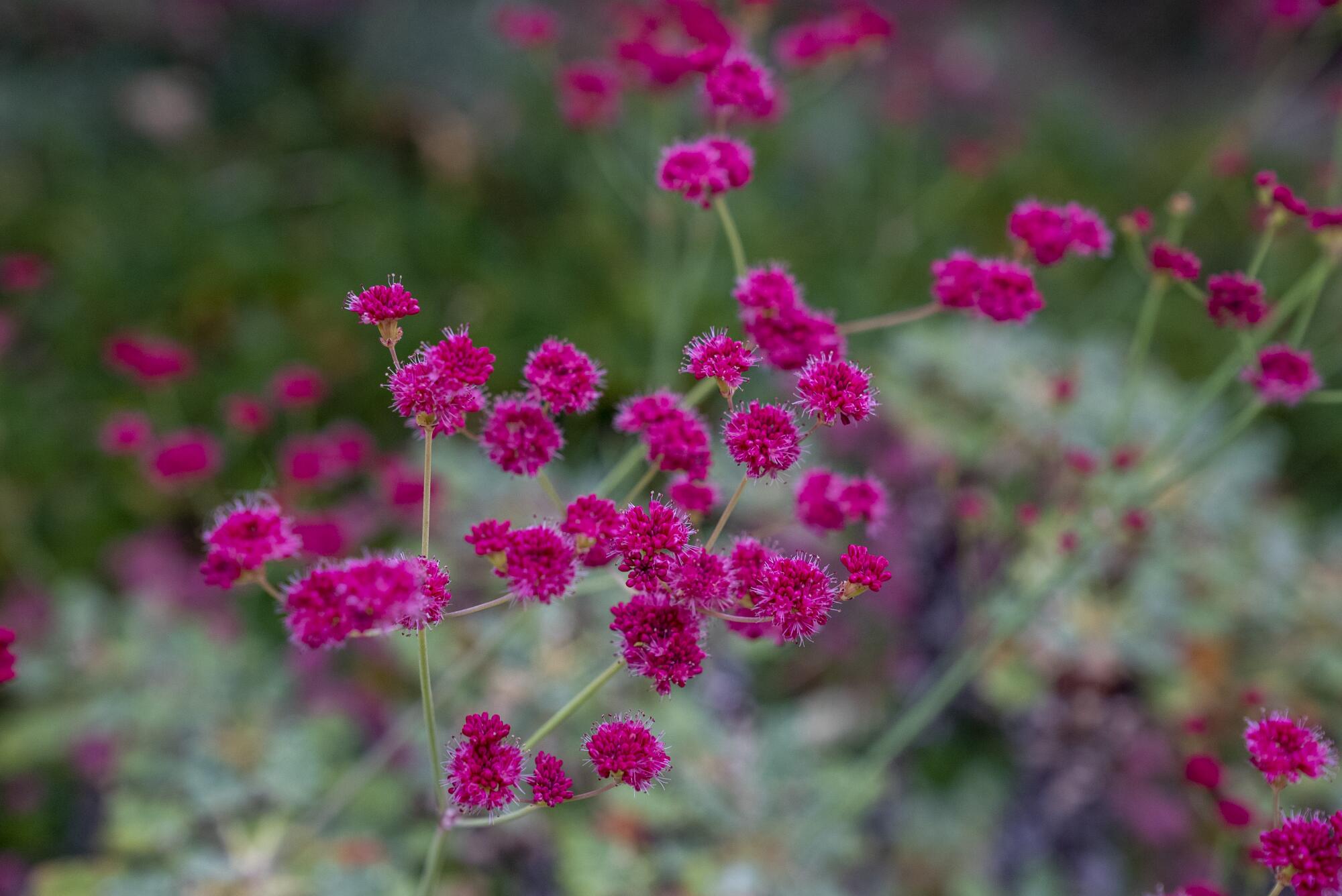
Buckwheats (Eriogonums) are varied in color and shape, but Prendergast says her favorites are St. Catherine’s lace (Eriogonum giganteum) with bouquet-like sprays of white to pinkish-white flowers (a favorite with pollinators too, but it can get very big, up to 9 feet tall), red-flowered buckwheat (Eriogonum grande var. rubescens), a low-growing plant with red pom-pom type blooms on tall stems, and sulphur buckwheat (Eriogonum umbellatum) with tall, pom-pom blooms in yellow or white.
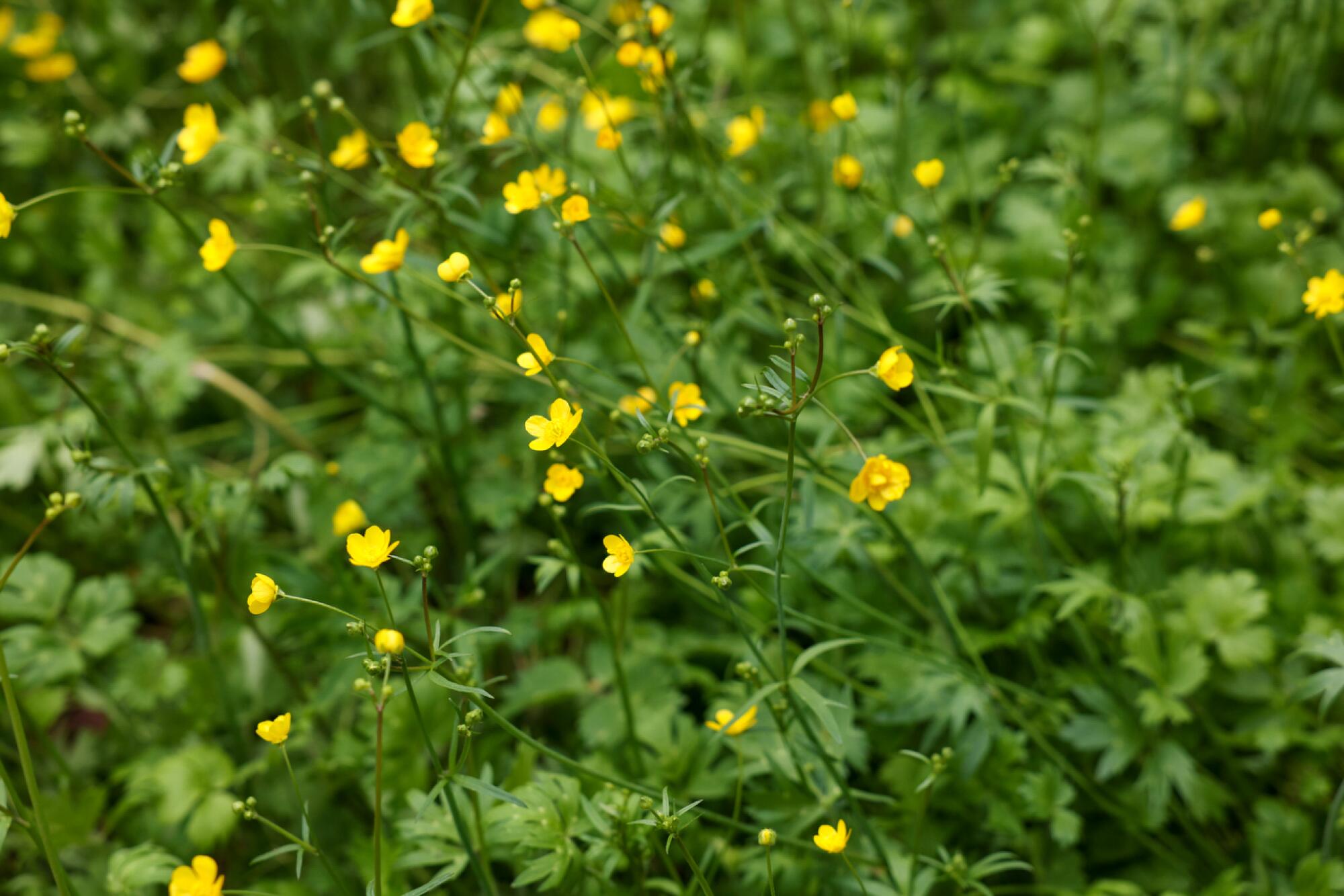
California buttercup (Ranunculus californicus) is a cheerful, reseeding addition to any garden with brilliant yellow flowers and bright green foliage.
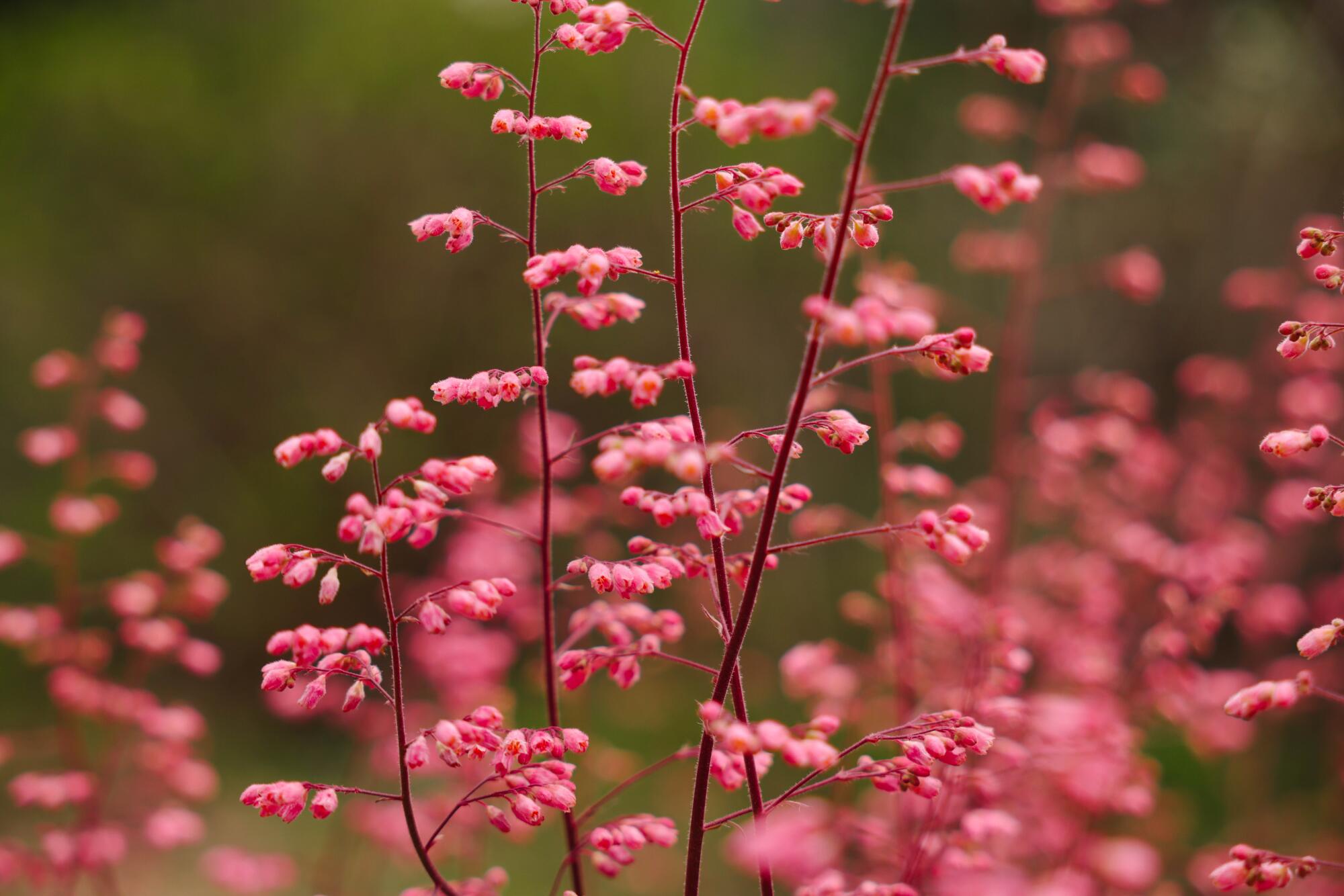
Coral bells (Heuchera sanguinea ‘Coral Bells’) has spring blooms that look like tiny clouds of exquisite pink fairy flowers, a perfect centerpiece flower against dark green foliage. These are great plants to add to shady areas in your yard.

Coulter’s matilija poppy (Romneya coulteri) is sometimes known as the “fried egg plant” for its huge white crepe-papery petals and yolk-yellow center. It makes an excellent cut flower, Prendergast says, but this is another native plant that doesn’t always play well with others. Once established it can take over a garden space. This is a great plant for slopes, because it grows exuberantly tall and wide, with lots of showstopping blooms.
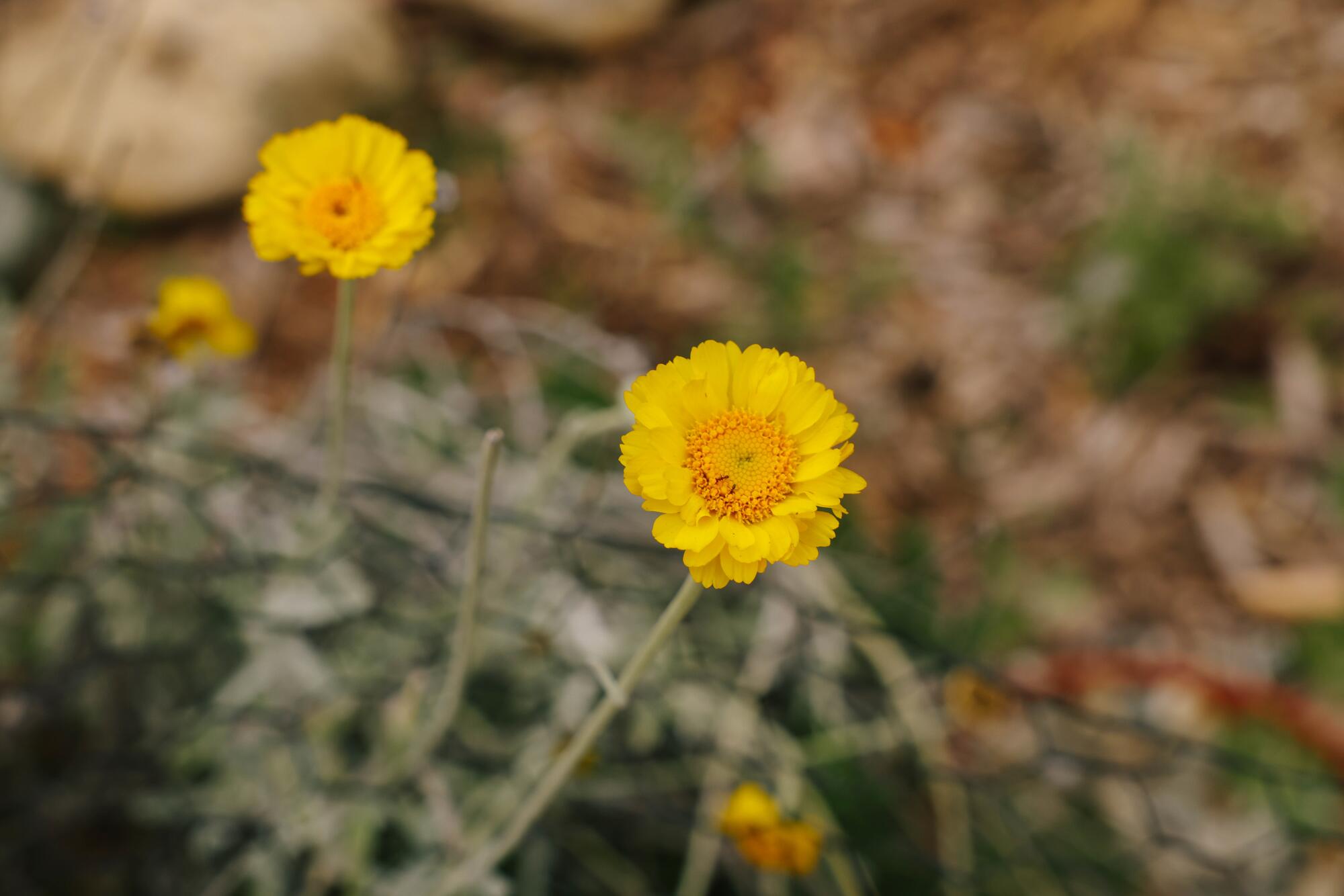
Desert marigold, a.k.a. wild marigold (Baileya multiradiata), are golden-yellow open-faced wildflowers with bare stems that just beg to be picked. These also reseed in sunny, well-drained garden spots.
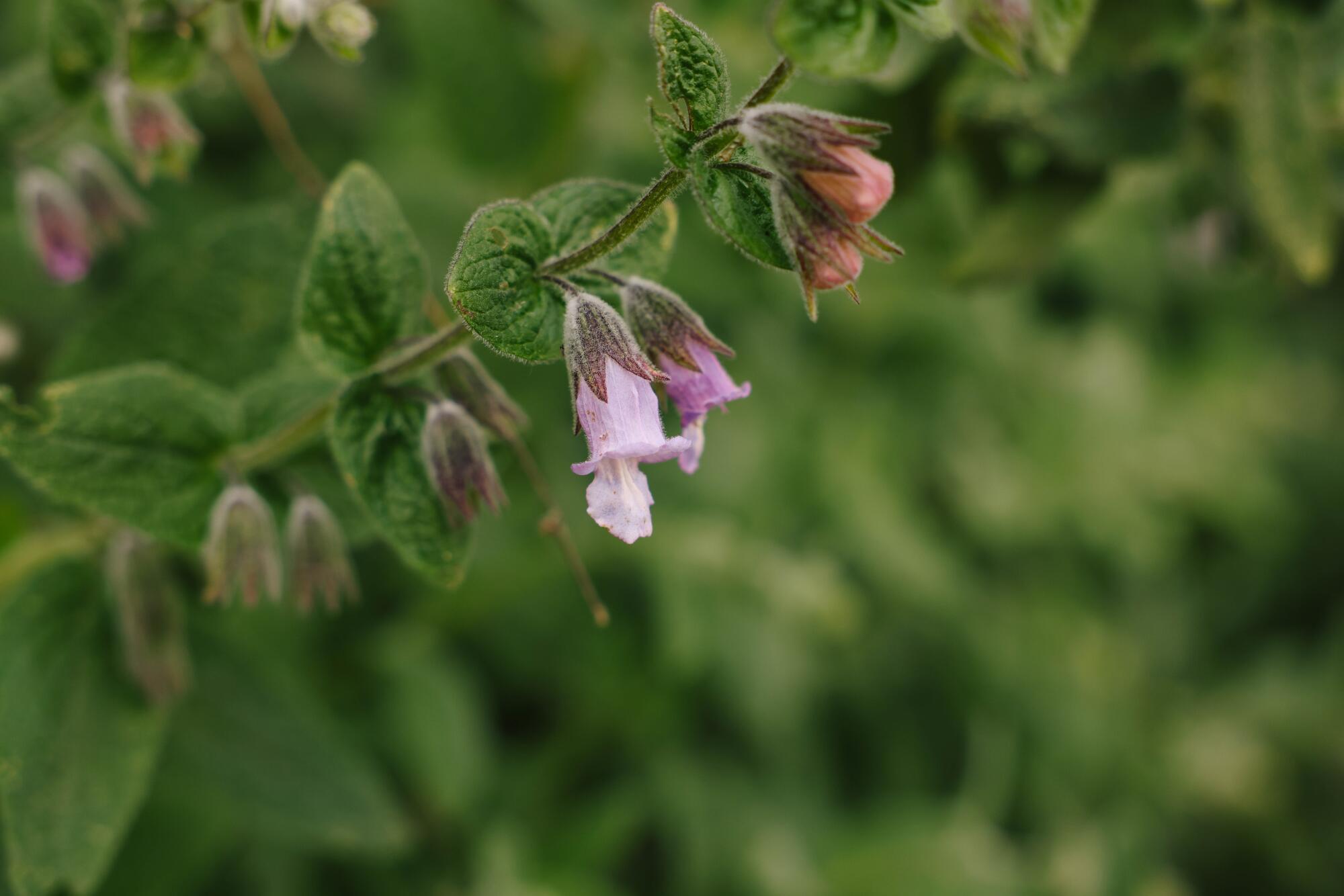
Fragrant pitcher sage (Lepechinia fragrans) definitely lives up to its name, with soft gray-green foliage, twisty stems and tubular pale violet flowers that actually look more blue than purple.
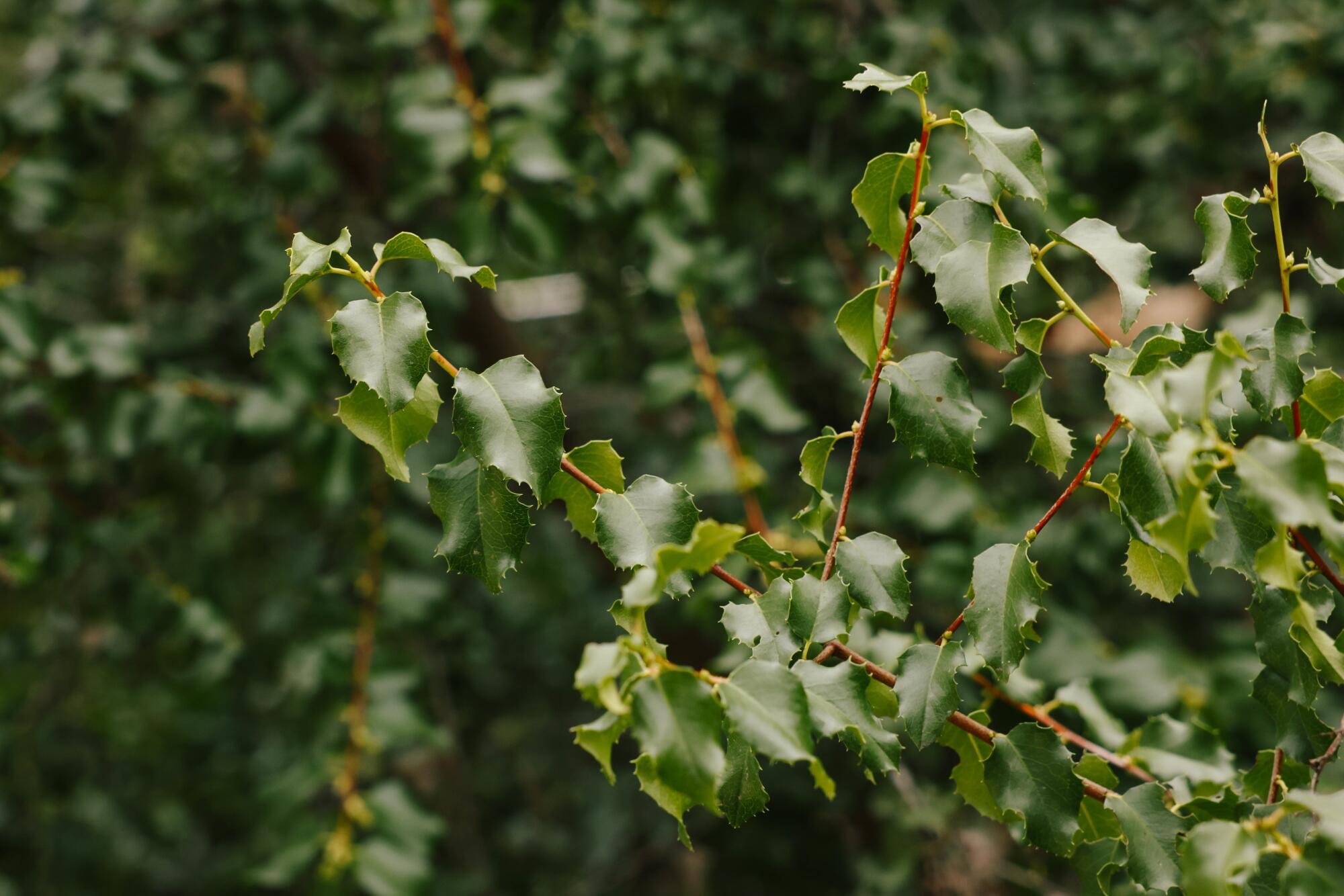
Hollyleaf cherry (Prunus ilicifolia) has underwhelming sprays of white flowers; it’s the deep green, serrated foliage that you’re after, a dramatic filler against the lighter-colored greens of so many other native plants.
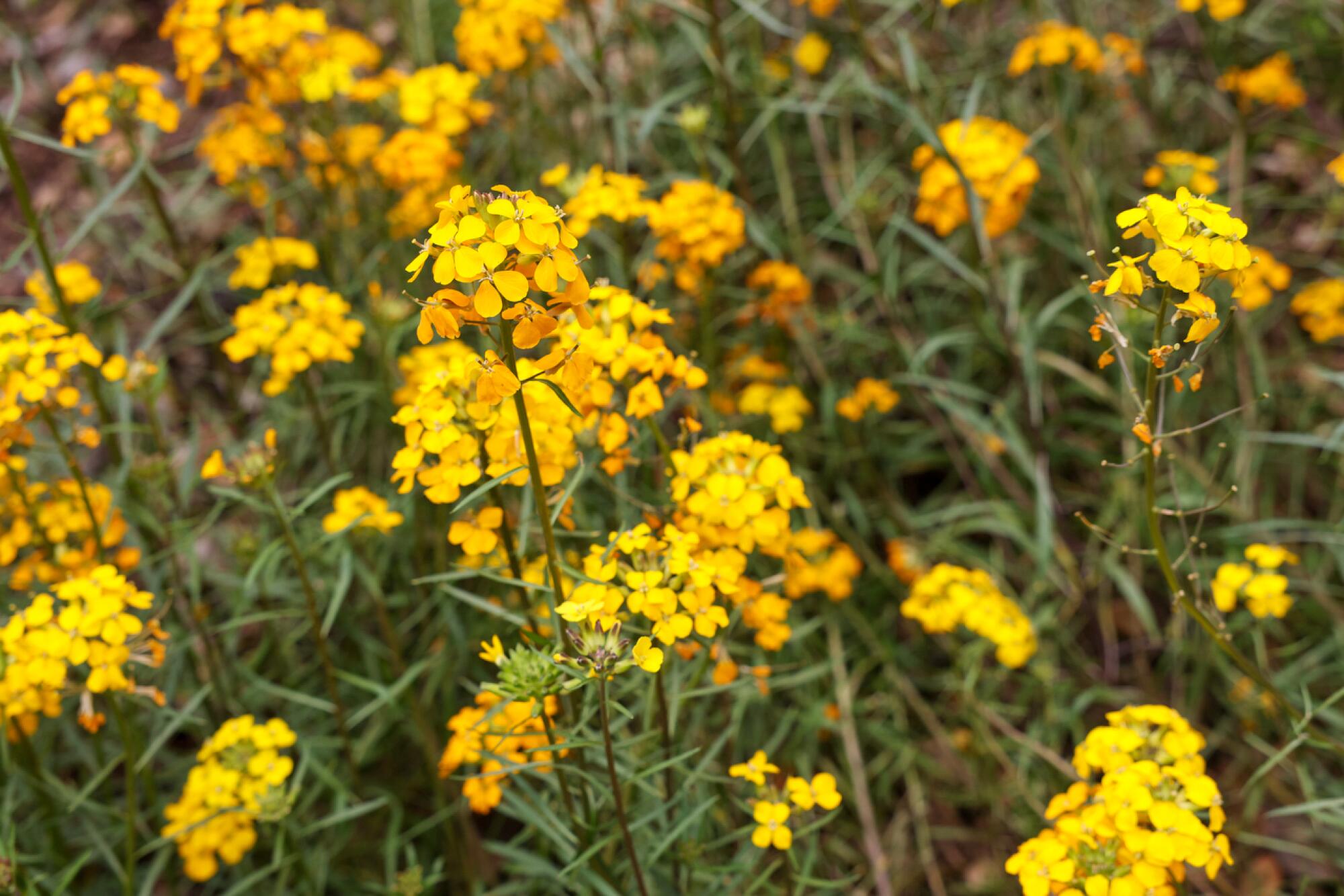
Sanddune wallflower (Erysimum capitatum) grows in clusters of sunny yellow or tangerine-colored flowers that look like small bouquets on straight stalks about a foot tall. Some wallflowers also have red, white or purple blooms, and the plants will reseed to grow back in the spring.
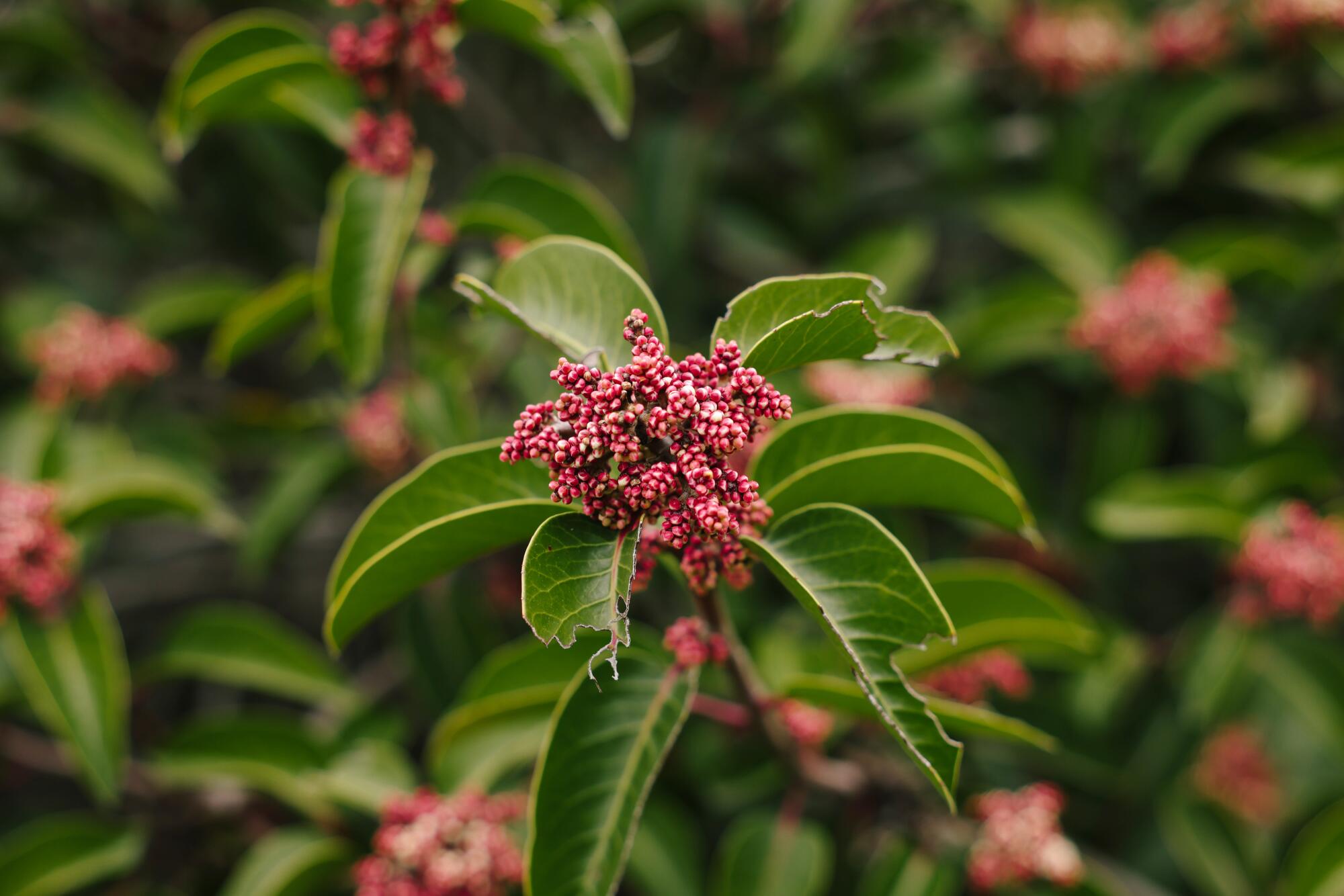
Sugar bush (Rhus ovata) comes with a proviso: It is a dramatic, fast-growing evergreen shrub/small tree with glossy green leaves, showy red blooms and berries that birds love. But this plant gets big, over 10 feet wide and tall, so be sure you put it in a spot where it won’t crowd out other plants. Calscape notes: “Sugar Bush hybridizes often with Lemonade Berry (Rhus integrifolia). A good rule of thumb for landscaping applications is: Within 5-10 miles of the coast, Lemonade Berry is a better choice. More inland, Sugar Bush does better.”
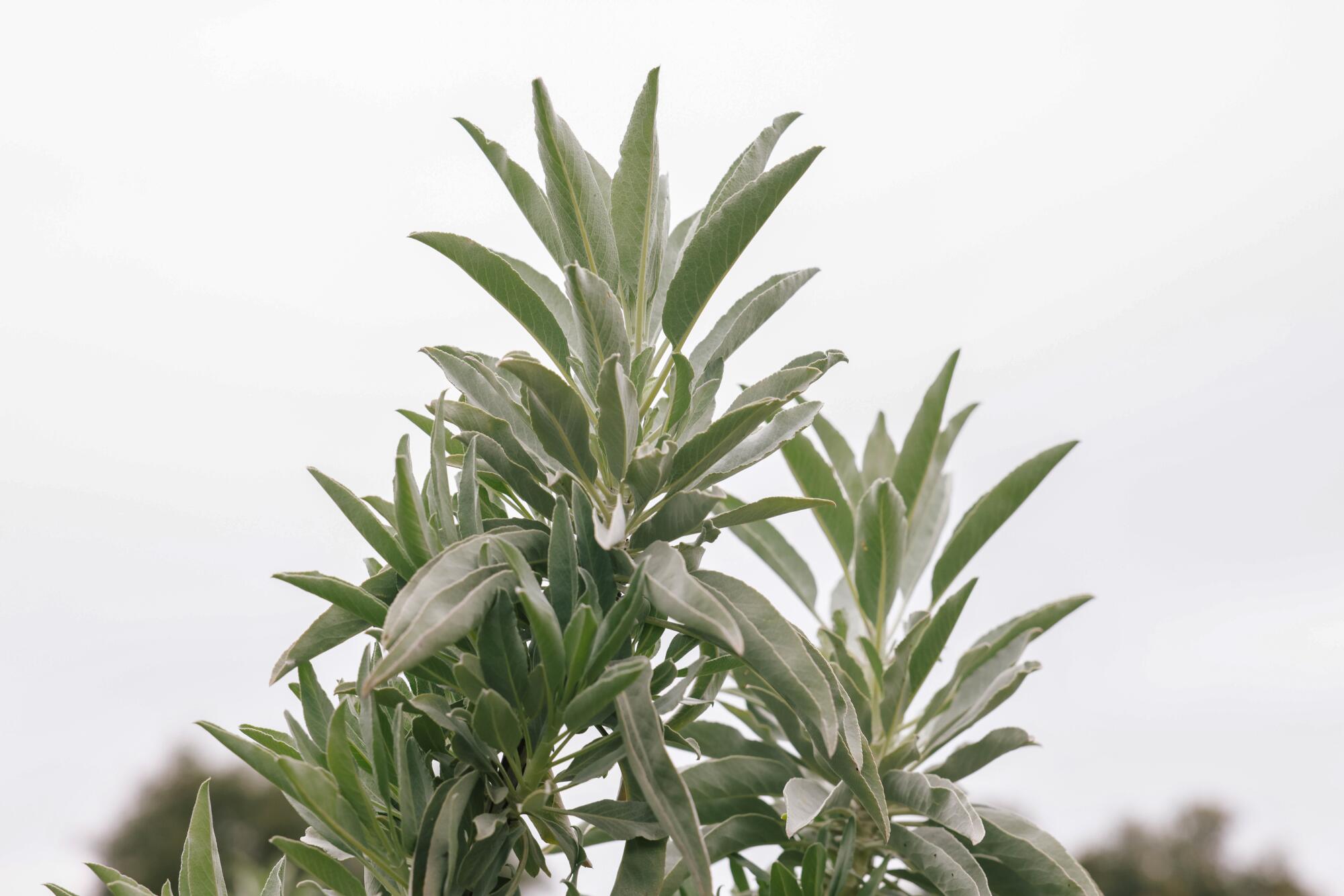
White sage (Salvia apiana) foliage (only in cooler months when the leaves stay firm). White sage flowers are tall and dramatic, so be sure you have a container large enough to hold them.
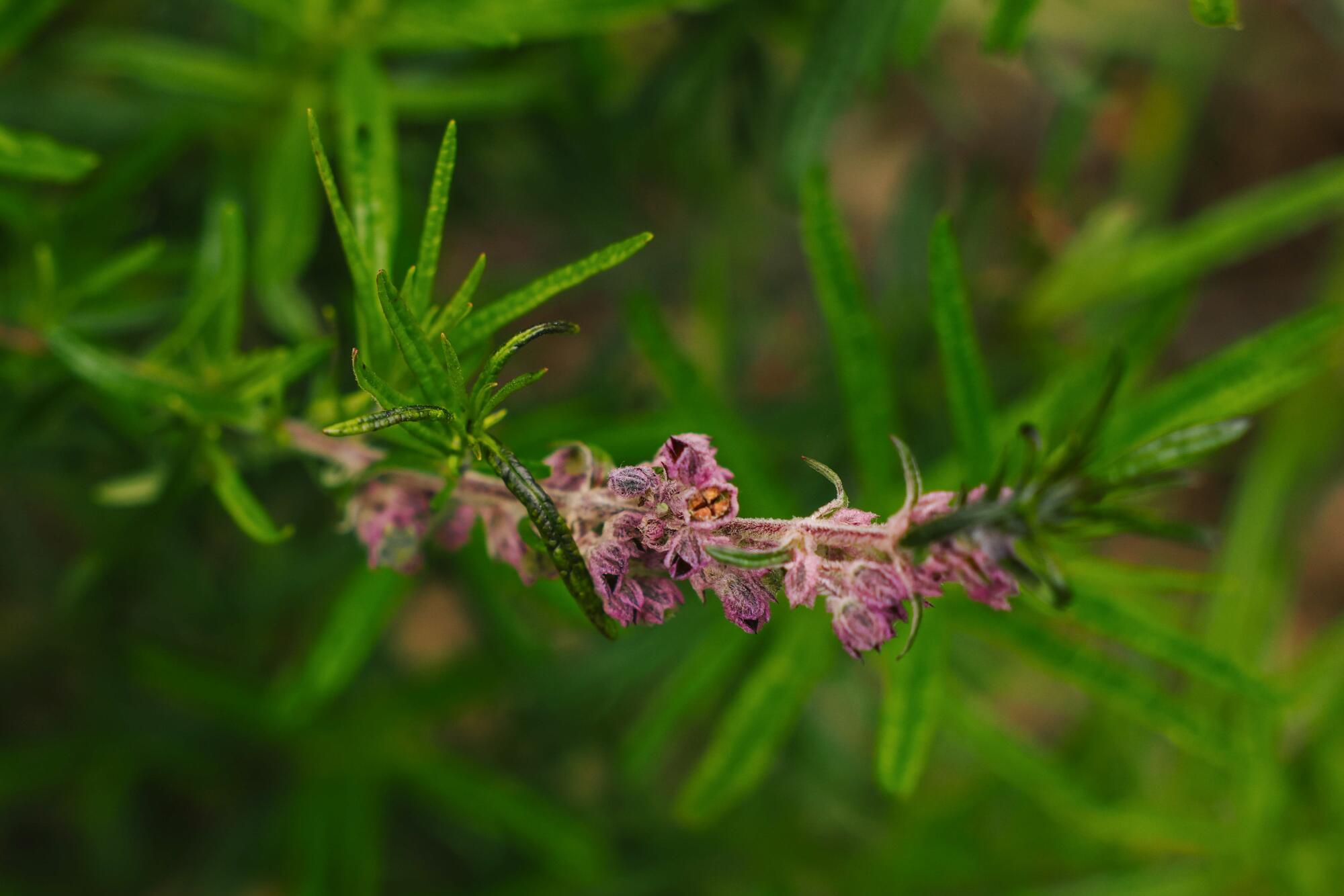
Woolly bluecurls (Trichostema lanatum) is a finicky native plant that needs regular water to get established and then none to stay alive, but it pays off beautifully with deep purple stalks of flowers and a swoon-worthy sweet fragrance beloved by pollinators and every person I’ve ever known. Definitely worth the effort.
There are plenty more choices, and you can get a good idea of the diversity in the beautiful book of native floral arrangements that Prendergast helped create, “California in a Vase,” available on Amazon for $50 or at the California Botanic Garden poppy shop window in the admissions kiosk for $30 (but only if purchased in person).
Theodore Payne Foundation’s Wild Flower Hotline returns on March 8, but will we have a superbloom in 2024? The early signs are hopeful.
If you want more tips, California Botanic Garden is offering a Wildflower Floral Design class on April 21 from 1 to 3 p.m. that includes all materials for $70 ($60 for members) taught by garden horticulturist Jennifer Chebahtah. And you can apply to become a member of the Native Designs group by applying to become a garden volunteer.
More to Read
Sign up for The Wild
We’ll help you find the best places to hike, bike and run, as well as the perfect silent spots for meditation and yoga.
You may occasionally receive promotional content from the Los Angeles Times.
